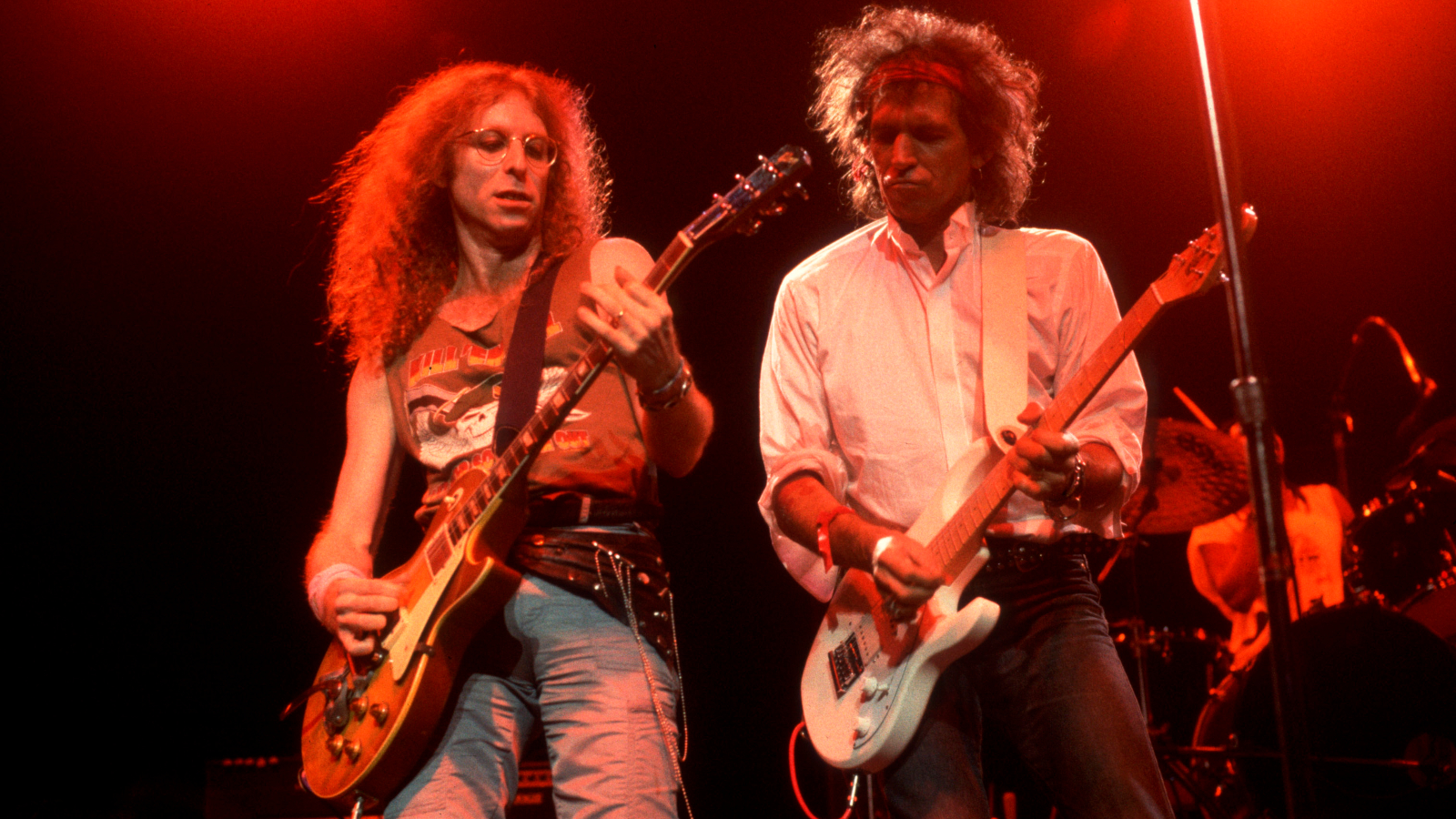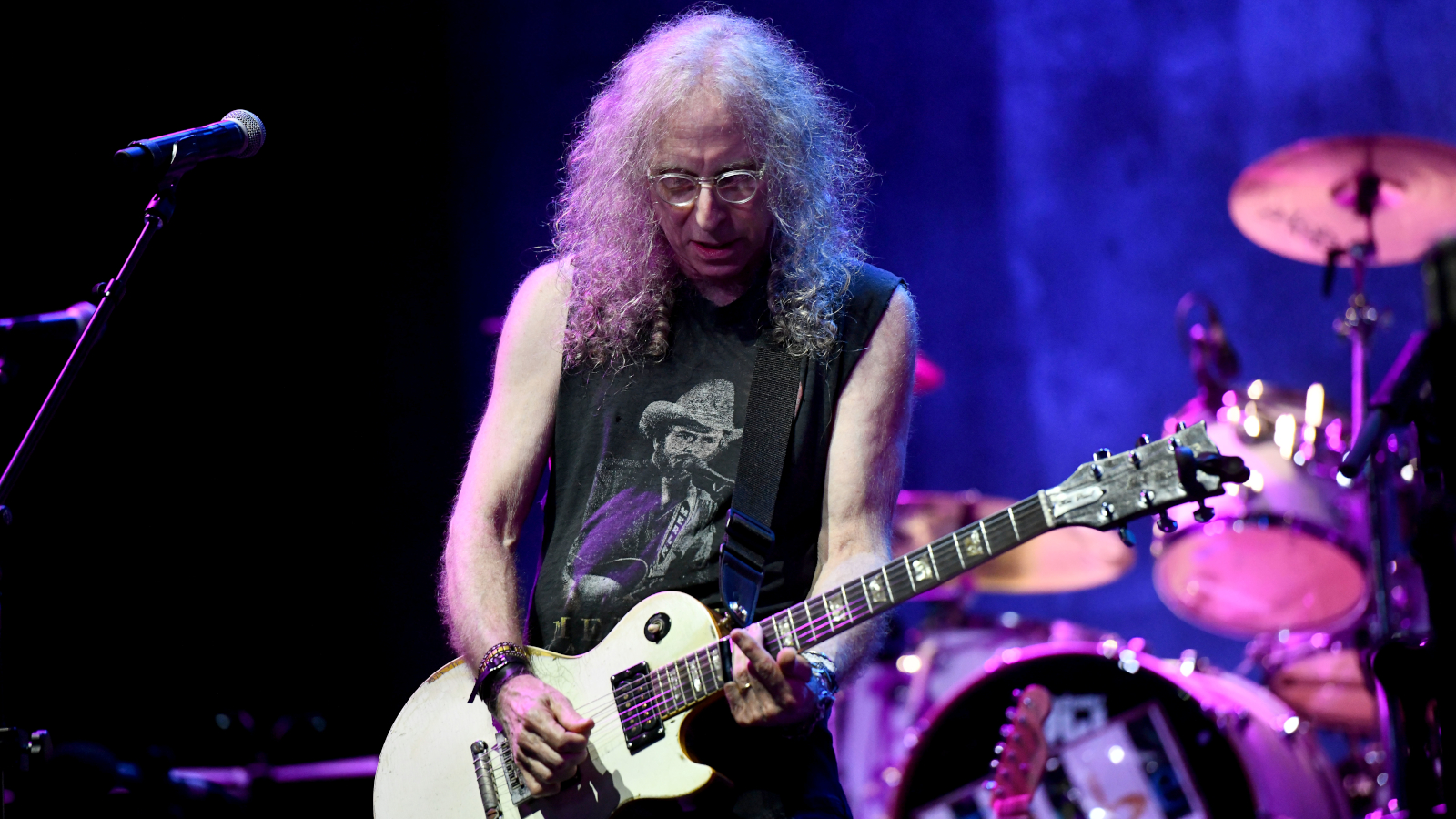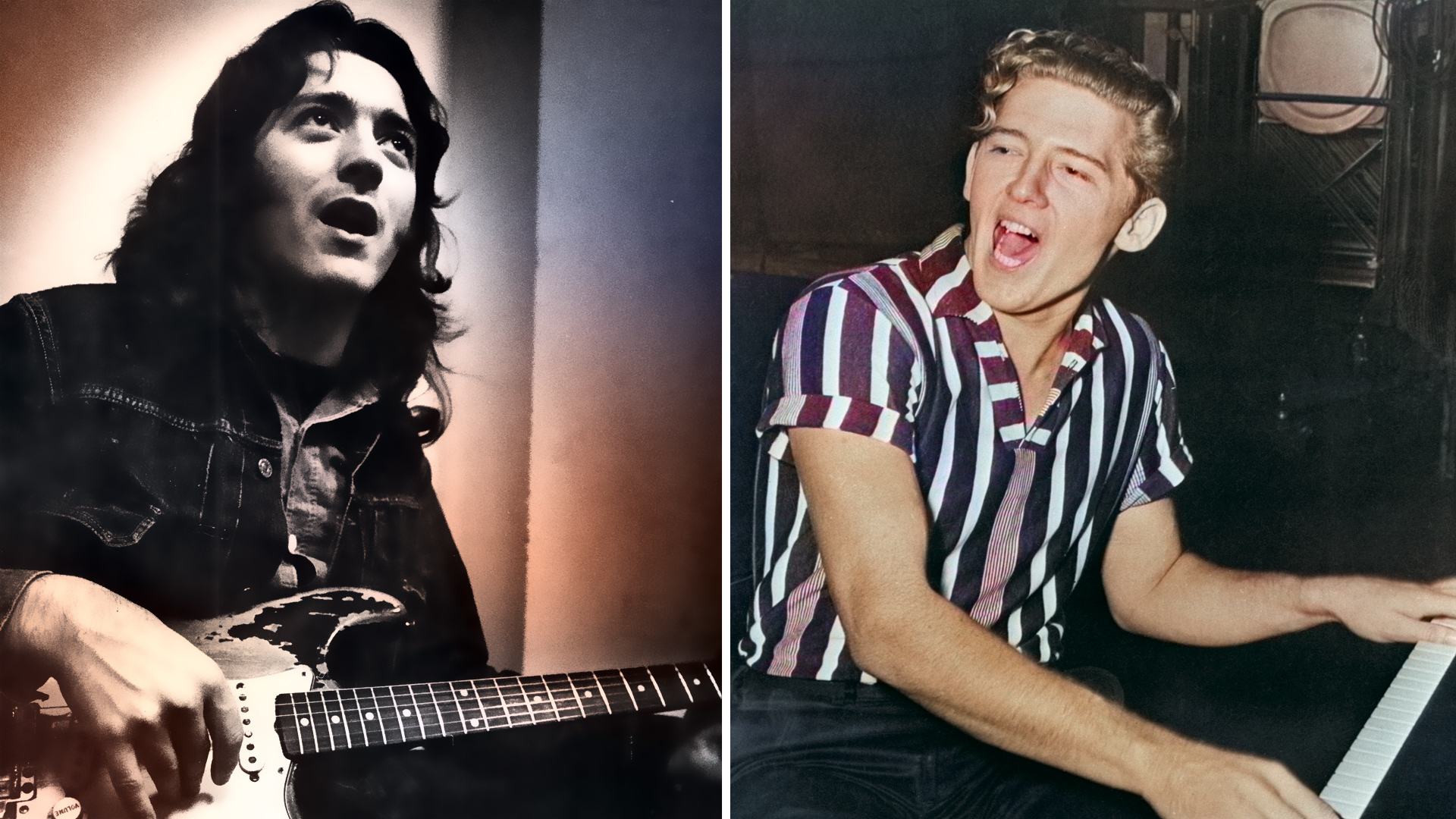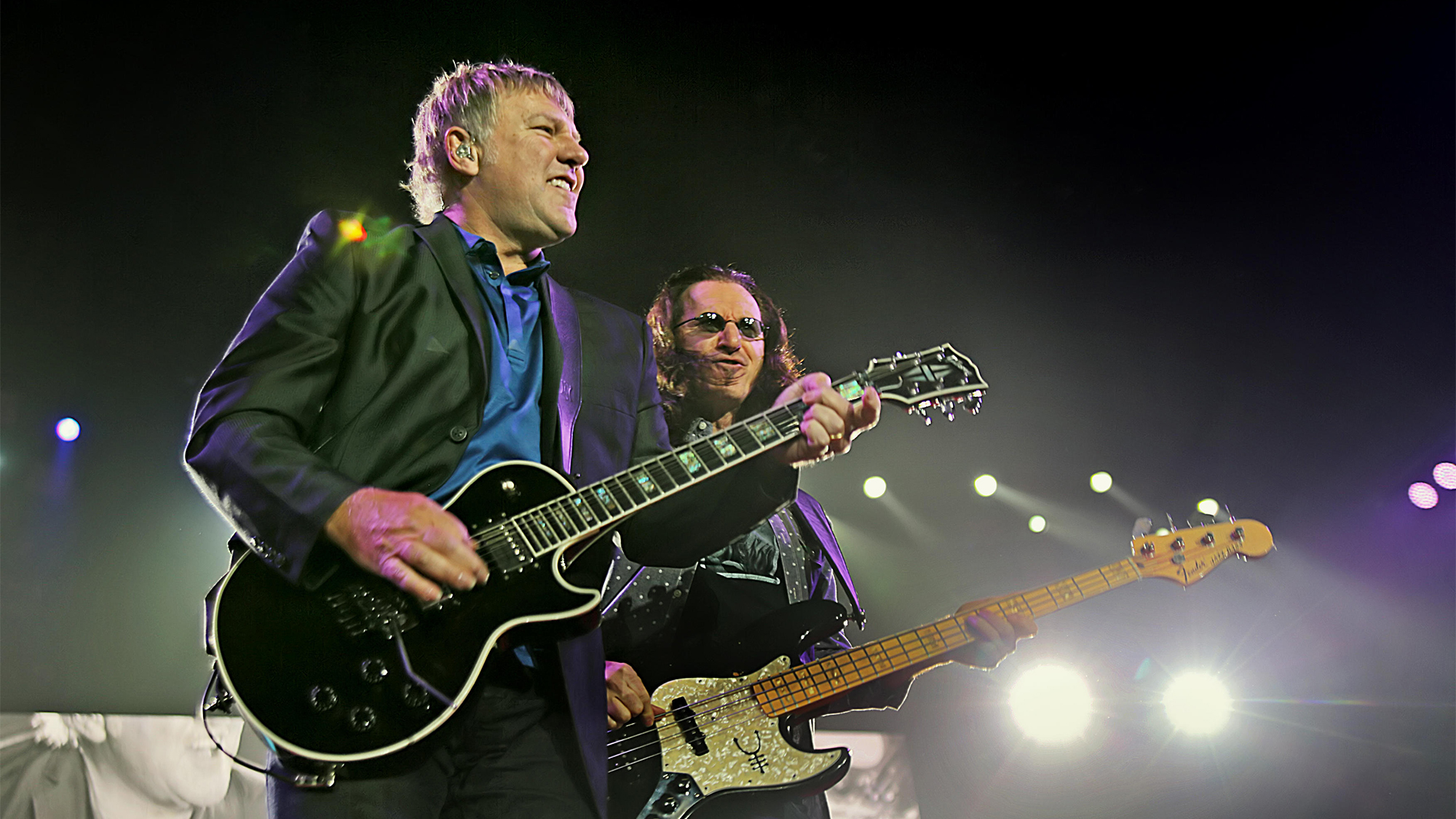“I’ve Been Privileged to Play on so Many Great and Important Records”: Session Veteran Waddy Wachtel Reveals His Top Six Career-Defining Tracks

***The following appeared in the February 2020 issue of Guitar Player***
Even a cursory look at Waddy Wachtel’s credits is enough to boggle the mind. During his decades-long career, the guitarist has toured and recorded with the Everly Brothers, Warren Zevon, Linda Ronstadt, Jackson Browne, Bob Dylan, Keith Richards and dozens – no, hundreds – more.
“I came out from New York to Los Angeles in the late ’60s at just the right time,” he says. “The studio scene was changing, and I was able to get in with the right producers and musicians. It’s been an amazing ride. Sometimes I’ll just look at the guitar pick in my fingers and go, ‘It’s all your fault!’”
Wachtel considers himself a “rock and roll specialist.” “People call me when they want me to generate the kind of rhythm that gets a song going,” he explains. But he’s no slouch when it comes to tossing out searing, hook-filled improvised leads.
I never forget that it’s all about the song. The song always dictates what you should do
Waddy Wachtel
“When I started out, I found a way of emulating steel guitar on my Les Paul,” Wachtel recalls. “For years, I did that ‘phony steel guitar’ thing, like on Randy Newman’s ‘Rider in the Rain.’ People would hire me for rhythm, but then they’d always ask me to lay down some phony steel-guitar lines as well.”
During his career, Wachtel has seen many players come and go from the L.A. studio scene, but he’s still standing, and his dance card remains filled.
“A lot of great players can’t adapt to the studio thing because they think it’s about them,” he says. “Don’t get me wrong: I have an ego, too, and I love to grab the reins and go for it, but I never forget that it’s all about the song. The song always dictates what you should do. I’m very traditional in my approach. I don’t like to use effects, and I always think, What’s the best way to accompany the singer and the song? That’s what you’re there for.”

He’s performed alongside many newbies who went on to become music greats, but he’s also found himself standing in a studio next to bona fide legends. Asked if he’s ever been starstruck, Wachtel laughs. “I got over that quick,” he says. “One of my first gigs was working with the Everly Brothers. Once you meet them, you’re kind of set for anybody else who comes your way.
This list could easily have been much, much longer
Waddy Wachtel
“Although one time I did have the distinct honor and pleasure of having John Lennon look in my face and go, [adopts British accent] ‘Hello, Waddy.’ I just about fell apart!”
Recently, Wachtel has been turning heads with his new band, the Immediate Family, which features fellow session legends Danny Kortchmar, Leland Sklar, Russ Kunkel and Steve Postell.
Below, he recounts the recording of six classic cuts he’s had a hand in. “I must say, it was difficult to choose just six,” he says. “I’ve been privileged to play on so many great and important records with unbelievable artists. This list could easily have been much, much longer.”
1. “That’ll Be the Day” by Linda Ronstadt from ‘Hasten Down the Wind’ (1976)
“When I started doing sessions, producers always told me, ‘Don’t play lead when we’re cutting basics. Don’t change the volume on your guitar. Just play rhythm and we’ll do solos later.’ But music affects me. I get excited and I let spontaneity take over. There are times when music has to be perfectly composed, and there are other times when it has to be spontaneous. ‘That’ll Be the Day’ was very much the latter.
There are times when music has to be perfectly composed, and there are other times when it has to be spontaneous
Waddy Wachtel
“I had just started working for Linda. We had recorded a couple of pretty things, but ‘That’ll Be the Day’ was going to be our first rock and roll track together. We rehearsed it a few times. Peter Asher was the producer, and Andrew Gold was the other guitarist on the session.
“While we were recording, I just felt a solo coming up. Something inside kept saying, You gotta go for it! So I flicked my Strat into an out-of-phase setting and let it rip. I improvised the whole thing. Then Andrew did a solo – it was something he had planned out – and at the end of it we did a harmony thing together.
“We did a few passes, but I think the first one was the keeper. That always happens. Everybody was thrilled. I remember that song was the first time I actually heard myself on the radio. I was standing outside one day and ‘That’ll Be the Day’ was playing in somebody’s car. My solo came screaming out of the speakers, and I went, ‘Hey, all right! Nice!’”
2. “Werewolves of London” by Warren Zevon from ‘Excitable Boy’ (1978)
“I’m very proud of this song – I co-wrote and co-produced it. Everybody knew it was a terrific song, but for some reason it was one of the hardest rhythm tracks to lay down. The band was me, Warren, Mick Fleetwood and John McVie. I don’t know why, but we went all night trying to find the right take. We must have run through it 60 times.
I just set myself up with my Les Paul, my cigarettes, an ashtray and a drink. I had an idea to try a slide solo, something dirty and greasy
Waddy Wachtel
“Finally, at five in the morning, [co-producer] Jackson Browne looked at me and said, ‘Which take do you like?’ And I said, ‘Take two is the one.’ We listened back, and that was it. It was definitely the one. The rhythm was extraordinarily great.
“I wanted to work on the solo, but I told the guys, ‘This could take a while. Maybe you should split.’ The engineer stayed, so I just set myself up with my Les Paul, my cigarettes, an ashtray and a drink. I had an idea to try a slide solo, something dirty and greasy. The solo spot came up, and I laid it down. Then I told the engineer, ‘Keep that one and let me do a harmony.’ I did the harmony and said, ‘We’re done.’ He was freaking out: ‘That sounds amazing!’
“I called Jackson at home and told him he’d better get back to the studio. He went, ‘What are you talking about? I just walked in the door!’ I said, ‘I know, but I think I nailed it.’ So he came back, and when he heard the solo he said, ‘I can’t believe it. That sounds fucking great!’ So again, spontaneity.”
3. “Edge of Seventeen” by Stevie Nicks from ‘Bella Donna’ (1981)
“Stevie wrote the song after hearing the Police’s ‘Bring On the Night.’ She was very inspired by the echo-driven guitar track that Andy Summers played, that rolling and repeating kind of sound. [Producer] Jimmy Iovine played the demo for me.
“It was very intense and dramatic, and he said, ‘I want it like that.’ I told him, ‘Well, I don’t use echo, so I’ll just play it.’ He was like, ‘What do you mean? You can play that without echo?’ So I showed him how I wanted to play it, really strong and forceful. Then the band went out – it was me, Russ Kunkel [drums], Bob Glaub [bass], Bobbye Hall [percussion], Roy Bittan [piano] and Benmont Tench [piano, organ] – and we just nailed it.
“People think it’s a loop, but I’m playing that part throughout the song – me on my sunburst ’60 through a Marshall! The funny thing about it is, it’s become the longest song in Stevie’s set. I’ve played it live with her, of course, and there have been times when she’s extended it to 12 minutes onstage. She will even go off and take a break, but the band will still be playing.
“You can’t fake your way through it; you’ve got to play it strong the whole time, and you have to use your whole arm on your picking hand. I’ve had to get that arm ready before a tour just to play that song. It’s a very physical experience. By the end of two minutes, I’m starting to hurt.”
4. “Oh Sherrie” by Steve Perry from ‘Street Talk’ (1984)
“My dear friend Niko Bolas was engineering the song. He thought it needed a really cool and nasty eighth-note rhythm, so he called me to play on it. I went to the studio and met Steve Perry, and then Niko and I sat down to work on it. I laid down a rhythm part – I think I did two takes – and we listened back. It sounded great. The song had a nice grind to it. All good.
It was a rock song. It needed a guitar solo. A saxophone? Are you joking?
Waddy Wachtel
“Then I noticed there was this big open spot in the song. I asked Niko, ‘What’s going to happen there? Sounds like a place for a solo.’ And he said, ‘Yeah, Steve is thinking of a saxophone solo.’ To which I said, ‘Oh, no, he’s not! Give me a track. I know what this needs!’ And I just went for it.
“What you hear on the song is what I instantly heard in my head. I just let it scream. I kind of played the melody of the vocal, but I threw in some double-stops. Steve came in and went, ‘Wow! That sounds incredible!’ We touched up a couple of parts, but it was basically as I heard it. I just had to do it. It was a rock song. It needed a guitar solo. A saxophone? Are you joking?”
5. “Take It so Hard” by Keith Richards from ‘Talk Is Cheap’ (1988)
“What a great experience! I played on the whole album and was in the band with Keith. Working with Keith, it’s always a matter of listening to what he’s doing and knowing how to respond.
I just grabbed the melody and worked in and around his rhythm playing
Waddy Wachtel
“He’s got that big fat humbucker sound, so I couldn’t use a Les Paul; I had to go for a Strat sound. We kind of counter-rhythmed off each other, but we didn’t talk about it. Keith played the rhythm in the first verse, and I came in with little chops and hits.
“The track was cut live, and Keith had his rhythm thing going. This was another one of those moments when I said, ‘I’m gonna play a solo.’ It was obvious to me what I needed to do. I just grabbed the melody and worked in and around his rhythm playing.
“Keith was so happy. Anybody else could have said, ‘Yeah, nice try, kid. I’ll take it from here,’ but Keith isn’t like that.”
6. “Anybody Seen My Baby” by the Rolling Stones from ‘Bridges to Babylon’ (1997)
“I’m honored to be one of the few guitarists not in the Rolling Stones to have played on one of their records.
I had a history with Keith, but it was great to get a ‘yo’ from both of the captains – him and Mick
Waddy Wachtel
“The guys were recording in Los Angeles for a couple of months, and next thing I knew [drummer] Jim Keltner and I were with them in the studio. I played rhythm on a couple of things. One day [producer] Don Was said, ‘On “Anybody Seen My Baby?” you’re gonna play lead.’ I was surprised: ‘Oh, really? Me? Well, okay.’
“Mick really loved the Isley Brothers song ‘That Lady’ and the phased guitar solo on it, so he mentioned it to me. I played rhythm on the whole thing, and there are some spots where I’m doing these long notes, but on the end solo that’s me playing those phased melody lines. Everybody dug it.
“I had a history with Keith, but it was great to get a ‘yo’ from both of the captains – him and Mick.”
Visit the Immediate Family website here.
Visit the Waddy Wachtel website here.
Get The Pick Newsletter
All the latest guitar news, interviews, lessons, reviews, deals and more, direct to your inbox!

Joe is a freelance journalist who has, over the past few decades, interviewed hundreds of guitarists for Guitar World, Guitar Player, MusicRadar and Classic Rock. He is also a former editor of Guitar World, contributing writer for Guitar Aficionado and VP of A&R for Island Records. He’s an enthusiastic guitarist, but he’s nowhere near the likes of the people he interviews. Surprisingly, his skills are more suited to the drums. If you need a drummer for your Beatles tribute band, look him up.
“I did the least commercial thing I could think of.” Ian Anderson explains how an old Dave Brubeck jazz tune inspired him to write Jethro Tull’s biggest hit
"This 'Bohemian Rhapsody' will be hard to beat in the years to come! I'm awestruck.” Brian May makes a surprise appearance at Coachella to perform Queen's hit with Benson Boone










